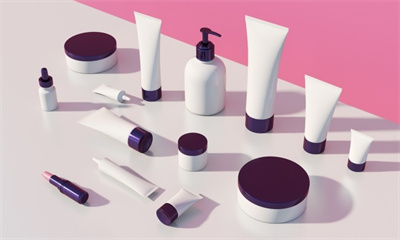Understanding Cosmetic Packaging Design: A Professional Overview
November 11, 2024
Product packaging design is the art and science of enclosing or protecting products for distribution, storage, sale, and use. It is a critical aspect of marketing and branding, as it not only safeguards the product but also communicates the brand's identity and message to the consumer. Effective packaging design can significantly influence a product's success in the market.

The Importance of Cosmetic Packaging
Cosmetic packaging is more than just a container; it is an essential element of branding and marketing. The right packaging can effectively communicate the essence of a product, evoke emotional responses, and enhance the overall user experience. Consumers today are increasingly drawn to products that not only perform well but also boast aesthetically pleasing and functional packaging.
Furthermore, packaging is pivotal in protecting the product’s integrity, ensuring that it remains uncontaminated and maintains its quality throughout its shelf life. Brands must prioritize durable materials and innovative designs that safeguard their products while also reflecting their unique identity.
Key Elements of Cosmetic Packaging Design
1. Functionality: Effective cosmetic packaging must be user-friendly, allowing for easy application and reusability. Pump bottles, airless containers, and refillable options are popular choices that enhance user convenience while reducing waste, appealing to environmentally conscious consumers.
2. Aesthetics: Visual appeal is critical in the cosmetics industry. The colors, typography, and overall design must align with the brand's aesthetic values, attracting the target audience. High-quality graphics and eye-catching designs can differentiate a product on crowded shelves.
3. Material Selection: The choice of materials plays a vital role in **cosmetic packaging** design. Brands commonly use glass, plastic, or sustainable materials, each offering distinct advantages. Glass conveys luxury and purity, while eco-friendly options appeal to the increasing demand for sustainability in the beauty sector.
4. Branding and Marketing: Cosmetic packaging serves as an extension of a brand's identity. Clever branding strategies that incorporate logos, taglines, and distinctive designs can create memorable experiences for consumers. Successful brands utilize packaging as a storytelling medium that communicates their values and mission.
5. Regulatory Compliance: It is essential for cosmetic packaging to adhere to regulatory standards. Accurate labeling, ingredient disclosures, and safety warnings are critical components that not only protect consumers but also build brand trust.
Trends in Cosmetic Packaging Design
The landscape of cosmetic packaging is ever-evolving, influenced by changing consumer preferences and technological advancements. Here are a few notable trends shaping the future of cosmetic packaging:
- Sustainability: There is a growing demand for eco-friendly packaging solutions as consumers become increasingly aware of environmental issues. Brands that utilize biodegradable materials, minimize waste, or incorporate refillable systems stand to gain a competitive edge.
- Smart Packaging: The rise of technology has introduced smart packaging options, such as QR codes that provide product information or augmented reality features that enhance customer engagement.
- Minimalism: Minimalistic designs that focus on simplicity and functionality are becoming increasingly popular. These designs prioritize clarity and elegance, resonating with consumers seeking authenticity and straightforwardness.

In conclusion,effective product packaging design can:
Enhance brand recognition and loyalty.
Differentiate a product in a crowded market.
Increase the perceived value of the product.
Encourage impulse purchases.
Provide essential information for safe and proper product use.
Product packaging design plays a pivotal role in a product's journey from the manufacturer to the consumer, influencing not only how the product is perceived but also how it performs in the marketplace.
